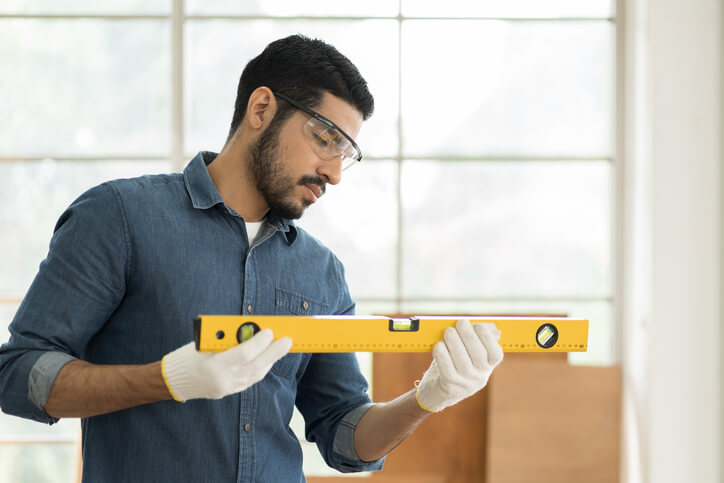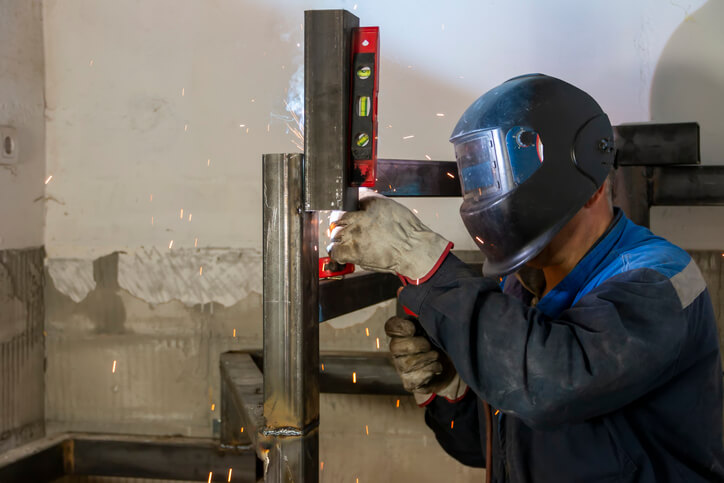Author: toppyhem

This obviously does not apply to everyone, but there’s something so wholesome and fulfilling about rescuing items (or constructions) from potential ruin and restoring them to their original glory. If this desire to repair and add value applies to you, you probably are already considering home renovation college.
One area that often requires attention during a renovation is wood restoration. Wood can add warmth and charm to any home, but over time, it may lose its lustre and become damaged. Wood restoration is also one of the most common projects faced by home renovation professionals, so here are four wood restoration tips to help you bring new life to wooden elements in any home.
1. Assess the Condition of the Wooden Element
Before embarking on the restoration of your piece, it’s essential to conduct some research to ascertain its value. Carefully examine the furniture for any marks or labels that might provide insights into its origin or manufacturer. If you suspect that it holds significant monetary or historical worth, it’s advisable to consult with a professional before proceeding with any restoration work. It’s also a good idea to take detailed photographs of any markings or tags as documentation. Refrain from stripping or sanding a collectible antique’s finish until you have a clear understanding of its value, as doing so could potentially diminish or even eliminate its worth.
As you’ll discover in home renovation training, it’s crucial to assess the condition of the wood you’re working with. Take a close look at the surfaces, checking for signs of rot, pests, or water damage. Look for cracks, warping, or discolouration. Understanding the extent of the damage will help you determine the best approach to restoration. Minor issues might only require sanding and refinishing, while more severe damage could require repair or replacement.
2. Prepare the Surface Correctly as Taught in Home Restoration College
Proper surface preparation is vital for achieving a successful wood restoration. To give your furniture a comprehensive cleaning, start by using a sponge and a solution of warm water and vegetable-based oil soap. Scrub the surfaces of the furniture thoroughly to remove any dirt and grime. Rinse the surface with clean water and allow it to dry completely before moving on to the next step.

For intricate or detailed pieces, employ a soft toothbrush to access hard-to-reach areas and clean the nooks and crannies effectively. In case there are tight spots that are difficult to reach, you can fashion a slender wooden dowel rod into a pointed tip, similar to sharpening a pencil. This sharpened end can then be utilized to carefully extract grime from those narrow spaces.
If you have stubborn stains or old finishes, you may have to scrape them off with sandpaper or a wood stripper.
3. Choose the Right Finishing Method
The choice of finishing method will depend on the desired look and the type of wood you’re working with. Some popular options for wood restoration include staining, painting, and applying varnish or oil-based finishes. Staining can enhance the natural beauty of the wood, highlighting its grain and texture. Painting can provide a fresh and uniform appearance, while varnishes or oils offer protection and durability. Research different finishing techniques and consult with professionals to determine the best option for your specific project.

4. Home Renovation College Educates on Proper Restoration Techniques
Wood restoration requires careful attention to detail and proper technique, just as our home renovation courses explain. When sanding the wood, start with coarse-grit sandpaper to remove any imperfections, then gradually switch to finer grits to achieve a smoother surface. Always sand in the direction of the wood grain to avoid scratches. If repairs are necessary, use suitable wood fillers or epoxy to fill cracks and holes, ensuring a seamless finish. Apply finishes evenly, following the manufacturer’s instructions, and allow sufficient drying time between coats.
Are you looking for a world-class home renovation college?
Contact NATS for more information.

The journey to becoming a full-fledged HVAC Technician will require you to pass your Gas Technician exams. These exams provide a route to proving your professional competence and qualification in diploma and meeting key licensing requirements that prepare you for a lifetime of practice.
It is mostly by making the mark in these exams that you can give your career a big push, even after all the years of HVAC technician training and work experience. This is why it is important to prepare adequately for your Gas Technician exams. Here, we have provided a few crucial tips to help you prepare for and ace these exams. They are discussed below:
Create a Study Plan and Schedule and Stick to it Throughout HVAC Technician Training
To prepare adequately for your gas technician exams, you need to create a plan that’ll account for your study, practice, and other relevant exam conditions. You must try to settle on a study schedule and a comfortable study location and method that’ll give you enough room to cover sufficient grounds as well as a consistent process to fall back on. You may plan for a physical group study of your peers if you are comfortable with it or check into virtual forums.

Gather relevant study materials, practice resources, gas codes, and other resources that’ll help your course. Set out times for reviewing your learning materials from your HVAC technician training and taking on previous exam questions. And after setting up the schedule, make a conscious effort to follow through on it.
Extensively Review Your Training Materials
The notes, textbooks, and other learning resources from your HVAC Technician courses should provide a handy study guide for exam purposes. So you must go over these materials and get the entire gist of what they contain to prepare you for your upcoming exams. Get a solid grasp of the key concepts behind important topics and research supporting data to break them down into their base form.
You should find notes on such topics as piping systems, safe practices, local codes and regulations, gas heating basics, and other critical subjects. And when you do, ensure to review them in detail, making sure to note down important points and problem areas that you can seek further clarity on.
Practice Previous Exam Questions and Use Exam Prep Guides
Gas technician exams from previous years can provide a critical study/exam practice guide for most people. And by solving the problems from these exams repeatedly, you can set yourself up nicely for a successful exam. You’d be coming to terms with the likely exam questions and the topics they touch on while also familiarizing yourself with the exam format and other conditions.

By getting the right answers to these questions, you can get an even better understanding of your study materials. This is the same for exam prep books that focus on key areas. They can help you provide targeted learning and give you improved exam leverage.
Get Relevant Practical Experience
Some of your gas technician exams will test your appreciation of certain technical skills and knowledge relevant to your discipline. To give you a good chance of success in these exams, ensure to get as much hands-on practice as possible. Your HVAC diploma program should equip you with this practical experience, and further practice beyond the classroom can help you gain extra ground.
Try your hands on critical practical applications/skills like inspection of leaks, venting, and other HVAC installations. Practice with relevant work tools like fasteners, analyzers, cutters, and benders. Work on real-life scenarios that require your use of these skills and you’d be giving yourself a solid headstart in your upcoming exams and future work/career pursuits.
Are you interested in HVAC Technician training?
Explore the HVAC Technician diploma program at the North American Trade School (NATS).
4 Essential Woodworking Techniques for Those in Cabinet Making Training
August 11, 2023
Like many other handcrafts, cabinet-making requires the use of several intricate skills and techniques. The accuracy, precision, and skill that go into it can only be obtained from quality learning and constant practice. This is why we have dedicated and passionate instructors at the North American Trade Schools (NATS) to pass down their wealth of experience to willing learners. If you choose a cabinet making career, you’ll be interested in the woodworking techniques discussed in this article.
Milling After Cabinet Making Training
Milling involves the conversion of rough lumber into symmetrical and precise work pieces, and it’s one of the most useful techniques you’ll learn during cabinet making training. It is the wood preparation process that begins with flattening one face of the board at the jointer and then smoothening the board’s opposite face at the planer. Next, you can make the board’s remaining edge true to the other by using a table saw and a chop saw.

Jointing
Jointing is the process when you smooth one face of the workpiece so you can reference it from that face whileTruing up the workpiece. During your journey through the cabinet making certificate program you will be shown the importance of good jointing techniques.
Planing
Planing is a surface-smoothing technique that rids the wood surface of any defects and excess material. You must learn to use a hand or electric planer to carry it out. When properly done, the lumber board will turn out with an even thickness across its required length. This is after you must have used the jointer to flatten one face of the board.
Sawing
Sawing is unarguably one of the most important parts of cabinet making. Our cabinet making courses provide insights into how to use several sawing tools and the various techniques for handling them. These tools include the chop saw, handsaw, table saw, circular saw, and chainsaw, among other sawing tools used for different purposes and project types. The key to using some of these tools is maintaining the right posture to achieve maximum impact without endangering yourself.
Drilling and Boring
While drilling creates holes in the wood, boring further enlarges the hole by removing excess material along the depth of the opening. Both processes will need precise control of the work tools to create openings with the right fit, and this requires adequate knowledge of the use of the proper drilling and boring tools and their accessories.

While using the drilling press, ensure the drill is at the correct speed, as drilling too fast can break the drill bit and create poorly machined holes. And while drilling in deep cuts, take out the drill at intervals to cool and clean the bit.
Finishing
This is the last stage of the cabinet-making process. It involves a series of actions, including sanding, filing, and rendering, all of which are taken to add finishing touches to the cabinet. For the best results, start with coarse grit sandpaper and sand in the board’s grain direction to create a fine grit surface free of scratches.
Top it off by applying thin coats of the selected finish across the entirety of the cabinet while looking out for joints and other hidden parts. Lightly sand on the cabinet surface before applying the topcoat, if necessary.
Want to earn your cabinet making diploma?
Contact NATS to learn how you can get started.
3 Reasons to Pursue a Construction Apprentice Position After Home Renovation Training
August 10, 2023
Construction apprentices are essential workers who perform various tasks on different types of residential and commercial construction projects, such as houses, roads, bridges, and skyscrapers. Construction is an interesting and great career choice in a country like Canada which continues to develop rapidly and welcomes hundreds of thousands of immigrants annually.
A look at the numbers might provide some perspective. According to Statistics Canada, investment in building construction in February 2023 alone was a whopping $20.6 billion. This figure could have been even higher; a severe shortage of construction workers means the industry is not functioning at its full potential.
If you’ve been mulling over choosing a career as a construction apprentice after your Home Renovation training, our enthusiastic recommendation would be to go for it! If you’re still unconvinced, this article offers three reasons to pursue a construction apprentice position after Home Renovation training.
1. The Position Offers Ample Job Opportunities and Flexibility
The construction industry is one of Canada’s largest and fastest-growing sectors, and according to Construction Canada, it expects demand for more than 300,000 new workers by 2030. This is exciting news for construction apprentices, as it translates to many opportunities for year-round engagement. Unlike in many other careers, you will also have the flexibility to choose the type of projects that interest you, the location that suits you, and the schedule that works for you.

If you’re the type of person who loves challenges, you’ll find the perfect fit for your personality in construction after your Home Renovation Technician training. No two days on the job are the same, and there’s always something new to discover and new heights (maybe even literally) to explore. To make things even more interesting, you don’t need to be tied to any location, company, or even project if you don’t want to be.
2. Career Growth as a Construction Apprentice
Working as a construction apprentice can be a stepping stone to other positions in the construction industry, such as foreperson, supervisor, estimator, or project manager. Our Home Renovation Technician diploma program encourages students to be optimistic and strive for goals despite challenges and obstacles. They carry this mindset into the workplace, motivating them to strive for career growth.

3. A Rewarding Career After Home Renovation Training
It’s an unarguable fact; working as a construction apprentice can be challenging. But it can also be vastly satisfying and fulfilling. The job provides the perfect platform to use your skills and knowledge from Home Renovation training to create structures that improve people’s lives and communities.
In addition, you’ll get to work with a diverse team of professionals who share your passion and vision for crafting solid structures that meet the basic needs of a large group of people. Beyond this, there’s that satisfaction of seeing the results of your hard work every day.
Are you ready to earn your Home Renovation diploma?
Contact NATS to learn how to get started.

The nature of a trend is that it is perpetually changing. People are always looking for the next best thing and to modernize as much as possible. In the case of home design and renovation trends, this is no different. With the shift in the working situation that has occurred in the past few years, many people are looking to make their home a space where they can both work and relax. This means that several different trends are emerging this year which follow this train of thought. As someone invested in home renovation, it will be important that you stay updated with these trends. Read on to learn more.
Working From Home Means More Home Offices
The number of people working from home has increased in the past few years. This means that there has also been an increase in people needing home offices or home working spaces. People have renovated spaces in their homes, turning them into work-from-home offices. There has also been an increase in the number of garages and sheds converted into work-from-home offices. These rooms are generally pretty simple in design and conducive to healthy and efficient working. Paint schemes are predominantly light colours, with some accent colours mixed in.
As someone considering Home Renovation training, this trend is will be good for future business. It means more renovations, and the work itself is not complex. Your training covers everything you need to know, including desk installation, wall painting, and renovation. Due to these being spare rooms or garages/sheds, they may also require patching up in several areas. The practical training you’ll receive in your program will prepare you for such work.

Use Calming Colours After Home Renovation College
The current trend for bathrooms is to use light and calming colours. This could be in the form of light greys, whites, greens, or blues for example. People want their bathroom to be a relaxing space, almost like a mini spa in their home. This means that the bathrooms are being renovated to include larger baths and showers. People prefer their bathroom tiles to either contrast the wall colour or match it. With this, it means that you may need to lay tiles. During Home Renovation college, you’ll learn about renovating bathrooms, including laying tiles, installing baths and showers, and connecting them. Acquiring these skills will ensure you’re ready to take on bathroom renovations in the future.

People Want More Outdoor Living Spaces
After enduring so much time indoors in isolation throughout the pandemic, many people focused on bringing the outdoors into their homes. With an increase in people working from home even now, they still want to be able to get up from their desks and experience nature. This could be in the form of balconies or patios. As people look to renovate their homes to do this, a professional home renovator will be well-equipped to fulfil this gap in the market. Whether you work for yourself or a company, a good Home Renovation program will ensure that you have all the knowledge you need to thrive.
Are you ready to earn your Home Renovation diploma?
Contact NATS to learn how you can get started.
4 Essential Skills For Success After Logistics Training
August 08, 2023
The logistics field is broad and challenging, playing a major role not only in the delivery of goods and services but everything related to the sourcing of raw materials, product development, storage, and transportation. Plenty of factors play a role in the logistics process and a wide range of specialized skills are required to keep up with demand and adapt to sudden changes in the business world. Our Supply Chain and Logistics Operations Program will prepare you to be a sought after professional in the field industry by helping you develop the following skills. Keep reading to see if you have what it takes to become a logistics professional and what skills we can help you develop.
1. Stay Calm Under Pressure For Success In Logistics Work
Because of the multi-faceted nature of the logistics field, there is plenty of room for things to go wrong. If you’re a natural problem-solver who can remain calm under pressure, supply chain issues are just an exciting opportunity to find new solutions. Whether or not you have the ability to remain calm in the face of a challenging situation now, our online training program will introduce you to real-world logistics experience that can help you gain confidence. Students get to practice using software applications, communications, purchasing and contracting, order management, operations planning, and warehousing.

2. Develop Data Analytics Skills After Logistics Training
Data analytics will play an integral role in your work after logistics training. In an industry that is constantly changing and affected by so many different economic factors, it’s essential for supply chain and logistics professionals to be able to interpret and analyze data that allows them to make informed decisions. In this context, data analytics requires candidates to possess excellent numerical skills, read and create spreadsheets, and be able to use industry-standard software solutions.
3. Interpersonal Skills Will Help You Secure Good Deals
As a supply chain and logistics professional, you’ll need to collaborate with many vendors for goods, transportation services, and more. Determining the most cost efficient solution will be vital to the success of your company. Excellent negotiation skills will be the golden ticket to lower expenses and higher profit margins. Proper negotiation after logistics courses should always begin with a solid professional relationship with vendors which involves interpersonal skills like communication, conflict resolution, teamwork, empathy, flexibility, and a positive attitude.

4. Innovative Skills Will Help You Adapt To Industry Changes
As briefly discussed, the supply chain and logistic industry is frequently subject to change and disruption. For example, the 2020 pandemic had a major impact on the industry due to staffing issues and lockdowns and companies needed to find innovative technological solutions to keep the economy supplied with essential goods. The use of technology is likely to continue and accelerate. If you’re naturally interested in advancement and enjoy flexing your creative problem-solving muscles, you’re likely to thrive in supply chain management and we will provide you with the technical skills and tools you need to get started.
Are you ready to start logistics college?
Contact NATS for more information!
The Importance Of Physical Fitness For Home Renovation Training Grads
August 01, 2023
Home renovation is often a physically demanding job, with many tasks requiring strength, coordination, and endurance. Lifting, carrying, or moving heavy materials are routine activities. Even tasks that may seem relatively sedentary, like painting or plastering, can put stress on the body, specifically on the arms and back.
Physical fitness plays a critical role in enabling home renovation professionals to carry out their work safely and efficiently. It’s not simply about possessing brute strength but also having the endurance and flexibility to handle tasks for extended periods without risking injury. In this blog post, we shall explore the importance of physical fitness for home renovation professionals, and why home renovation graduates should pay particular attention to this.
Improved Physical Health
Engaging in the home renovation industry means embracing physically intensive tasks. Your day might involve demolition work, construction, or detailed activities like painting. Each of these tasks demands different physical attributes: strength, stamina, and flexibility. As a graduate of our home renovation training program, focusing on your physical health and incorporating regular exercise into your routine becomes crucial. This fitness regimen ensures your body is equipped to meet these strenuous demands, boosting your endurance, and minimizing the risk of work-related injuries.

Further, a fit body is less likely to succumb to chronic fatigue or other health complications. By prioritizing fitness, you can perform your duties more efficiently and preserve your overall well-being in the long run. Indeed, as a home renovation professional, physical preparedness is key to navigating the challenges of your work.
Improved Mental Health
Physical fitness is not just about the body; it also influences our mental health in remarkable ways. Regular participation in physical activities encourages the release of endorphins, the “feel-good” hormones, which enhance our mood, and mitigate feelings of stress, anxiety, and depression, thereby promoting a sense of well-being. The physical fitness level of graduates of home renovation training plays a crucial role in their ability to navigate the tricky world of home improvement projects.

The nature of renovation work can be complex and occasionally overwhelming. Encountering unexpected challenges or project delays is not uncommon. In these moments, physical fitness plays a vital role in helping you maintain a positive mental outlook, equipping you with the fortitude to face difficulties head-on. In essence, being physically fit doesn’t only contribute to a healthier body but also fosters a more resilient and positive mind, particularly beneficial in challenging industries like home renovation.
Reduced Stress Promotes Effective Decision Making During and After Home Renovation Training
Stress reduction is another crucial benefit of physical fitness. Home renovations are notorious for unexpected surprises and the stress that follows. Whether it’s the discovery of an electrical issue or a sudden change in the client’s plans, these situations can cause significant stress. Engaging in physical activities has been scientifically proven to help lower stress levels. This effect is vital for home renovation college graduates, as lower stress levels will enable you to remain calm under pressure and make effective decisions.
Increased Productivity
Increased productivity is a significant advantage of physical fitness. A body in prime physical condition can work longer and harder. Maintaining a high level of fitness can make you more productive and capable of completing tasks efficiently. Furthermore, regular exercise can improve sleep quality, leading to better concentration, fewer mistakes, and overall better performance on the job.
Are you interested in our home renovation courses?
Contact NATS for more information.

When people think about welding, they often picture sparks flying and skilled technicians working with their hands. While manual dexterity and practical skills are undoubtedly crucial in welding, you might be surprised to learn that math plays a vital role in this profession as well.
Mathematics provides the foundation for understanding welding processes, measurements, and calculations, making it an essential skill for those completing welder training. Welders, particularly professional ones, need to possess a strong understanding of various mathematical concepts, including fractions, decimals, geometry, volume, and area. This knowledge is crucial because welding demands exceptional precision to ensure the structural integrity of the resulting welds, especially in applications involving high-pressure vessels.
In this blog post, we will explore the significance of math in welding and why it is essential for aspiring welders to develop a strong mathematical aptitude.
Accurate Measurements and Calculations and Material and Alloy Comprehension
Welding requires precision and accuracy in measurements. From determining the length and angle of a joint to calculating the appropriate welding parameters, accurate measurements are critical to ensuring structural integrity and weld quality. Math skills enable welders to interpret blueprints, understand dimensions, and make precise calculations. Whether it’s determining the required material quantities, calculating heat inputs, or evaluating welding tolerances, math helps welders execute their work with precision and efficiency.

Understanding the properties of different materials and alloys is paramount to welding. Math provides the necessary foundation for comprehending these properties and their behaviour under various welding conditions. Equations related to material strength, thermal expansion, and mechanical properties assist welders in selecting the right welding technique and parameters for a given application. This knowledge helps prevent material distortion, cracking, and other welding defects that can compromise the quality of the weld.
Blueprint Interpretation Made Easy
Blueprints are a universal language in the welding profession. They provide welders with essential information regarding joint design, weld symbols, and dimensions. Proficiency in math allows welders to interpret blueprints accurately, identify critical dimensions, and plan their welding processes accordingly. Understanding geometric shapes and angles is particularly important when working with complex joint configurations. Welders with mathematical proficiency can accurately analyze the blueprint’s information, apply mathematical principles such as trigonometry, and determine the exact angles and dimensions needed for the welds. This attention to detail and mathematical precision ensures that the welds fit precisely, maintaining the desired structural integrity.

Problem Solving and Troubleshooting Made Easy After Welder Training
Welding often presents challenges that require problem-solving skills. Math, in addition to their welder training, equips welders with the ability to analyze complex situations, apply logical reasoning, and devise effective solutions. For instance, when encountering irregular joint configurations, welders can use math to determine the correct angles and dimensions for their welds. In addition, math proficiency allows welders to troubleshoot welding defects by identifying potential causes and making adjustments to welding parameters.
Mathematics provides a systematic framework for welders to approach challenges, encouraging a methodical and analytical mindset. It enhances their ability to understand the underlying principles of welding processes, enabling them to make informed decisions and take corrective actions when necessary.
Prepare for a Successful Welding Career Through Welder Training With NATS!
The Structural and Pressure Vessel Welder Diploma Program at North American Trade Schools (NATS) is a comprehensive program that provides students with the essential knowledge and practical skills needed to excel in the field of welding. Through hands-on training, students learn various welding techniques, safety protocols, blueprint reading, and welding symbols. The program’s curriculum is designed to meet industry standards and prepare graduates for entry-level welding positions. With experienced instructors, state-of-the-art facilities, and a focus on real-world applications, the welder diploma program at NATS equips students with the expertise and confidence to pursue rewarding careers in welding, contributing to their professional growth and success.
Are you looking for a world-class welder college?
Contact NATS for more information.
An Introduction To The Supply Chain Process For Those Considering Logistics Training
July 25, 2023
In today’s interconnected global economy, efficient supply chain management is crucial to the success of businesses across various industries. The supply chain process encompasses the movement of goods and services from raw materials to the end consumer. If you’re considering a career in logistics, understanding the fundamentals of the supply chain process is essential. In this blog post, we will provide an introduction to the supply chain process for those interested in logistics training.
What is the Supply Chain Process
A supply chain is a complex network of interconnected organizations, activities, information, and resources that work together to source, produce, and transport goods from their origin to the final destination, usually from suppliers to end customers. In today’s globalized world, supply chains have become increasingly intricate, often spanning multiple countries and involving numerous stages and processes.
The supply chain process refers to the series of interconnected activities involved in the creation and delivery of products and services. It starts with the procurement of raw materials and ends with the delivery of the final product to the customer. The key stages in the supply chain process include sourcing, manufacturing, distribution, and retail.
Sourcing
As you’ll discover in logistics training, the sourcing stage involves the identification and selection of suppliers capable of providing the necessary raw materials or components for production. Various factors, such as quality, cost-effectiveness, reliability, and sustainability, are considered in the evaluation of potential suppliers. Effective sourcing ensures that the right materials are procured from trusted suppliers, fostering the foundation for successful manufacturing and subsequent stages in the supply chain. Thorough supplier assessment helps mitigate risks, optimize costs, maintain product quality, and uphold sustainability standards throughout the supply chain.

Manufacturing
After the procurement of raw materials, the supply chain process moves into the manufacturing stage. Here, raw materials undergo a series of production activities to be transformed into finished goods. This involves a carefully orchestrated process of manufacturing, including production planning, quality control, and inventory management. Effective production planning ensures the optimal allocation of resources, scheduling of tasks, and coordination of activities to achieve efficient and timely production. Quality control measures are typically also implemented to maintain consistent product quality and meet customer expectations. To minimize stock wastage and ensure seamless production operations, effective inventory management practices are key.
Streamlined Distribution As Taught in Logistics Training
The distribution stage of the supply chain process revolves around the efficient transportation and storage of finished goods. It entails the movement of products from manufacturing facilities to various points such as warehouses, distribution centres, and ultimately to retailers or customers.

This stage heavily relies on effective logistics operations, including comprehensive transportation management and strategic warehouse optimization. And just as our logistics courses emphasize, businesses can enhance customer satisfaction by streamlining transportation routes, selecting the most efficient modes of transportation, and optimizing warehouse layouts. Needless to say, well-executed logistics operations are crucial for maintaining the smooth flow of goods throughout the supply chain network.
Retail After Logistics Training
In the supply chain process, the retail stage is the final frontier where products are made accessible to end consumers. A number of activities are carried out and considered essential at this stage, such as inventory management, order fulfillment, and exceptional customer service. Retailers play a pivotal role in ensuring that the right products are available in optimal quantities at the right time, meeting consumer demands and preferences effectively. They diligently manage inventory levels, efficiently process and deliver orders, and provide exceptional service, contributing to customer satisfaction and loyalty.
Are you looking for a world-class logistics college?
Contact NATS for more information.
4 Red Flags To Look Out For in Basements After Home Inspection Training
June 28, 2023
Basements are an integral part of a home. They provide useful storage space, serve as a foundation for the entire structure, and house most of the home’s key functioning systems. Despite all of these, though, potential homebuyers tend to spend the least amount of time in basements and typically fail to notice issues with them.
As is often the case, this can be a mistake; a troubled basement is a fertile breeding ground for sickness-causing mould. It can also pose a fire hazard in the future, or, at the very least, cause homeowners to spend a lot on repairs. During your inspections, you’re responsible for making sure that your clients don’t fall into these types of traps. In this blog post, we will discuss four common red flags to look out for during basement inspections after your training.
1. Moisture and Water Intrusion Founded Through Home Inspection Training
One of the most critical issues to identify in basements is moisture and water intrusion. Excessive moisture can lead to mould growth, structural damage, and a host of other problems. Signs of moisture include water stains, dampness, musty odours, and efflorescence (white, powdery deposits on surfaces). During your inspection, pay close attention to the basement walls, floors, and ceiling for any visible signs of water intrusion. Additionally, inspect the perimeter for proper grading, functioning gutters, and adequate drainage systems.

2. Foundation Cracks and Structural Issues
Just as you’ve learned during home inspection training, basements are susceptible to foundation cracks and structural problems due to soil movement, settling, or poor construction practices. These issues can compromise the stability and safety of the entire home. During your inspection, carefully examine the basement walls, floors, and foundation for any visible cracks, bulges, or signs of shifting. Horizontal cracks, widening cracks, or stair-step cracks are particularly concerning and should be evaluated by a structural engineer to determine their severity.
3. Home Inspection Training Highlights Inadequate Ventilation and Poor Air Quality
Basements often lack proper ventilation, leading to poor air quality and potential health hazards. Insufficient airflow can result in a buildup of moisture, stale air, and the proliferation of harmful substances such as radon gas. During inspections after your home inspection training, check for proper ventilation systems, including vents and exhaust fans, to ensure adequate air circulation. Consider conducting a radon test as well, as it is a colourless, odourless gas that can be harmful if present in high concentrations.
4. Electrical and Plumbing Issues
In addition, it is crucial to inspect the electrical and plumbing systems housed in basements. Outdated or faulty electrical wiring, exposed wires, improper grounding, and overloaded circuits can pose significant safety risks.

Carefully examine the electrical components for any signs of wear or potential hazards. Similarly, inspect the plumbing system for leaks, damaged pipes, and indications of water damage, which can lead to costly repairs and structural issues. Don’t forget to ensure that sump pumps, if present, are functioning properly to prevent basement flooding, which can cause extensive damage to the property. To ensure the basement’s safety and functionality, it is imperative to thoroughly inspect these systems.
Are you eager to learn more about a home inspection program?
Contact NATS for more information now!
